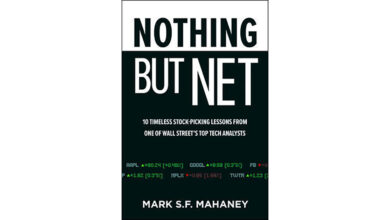Responsible Innovation in Distribution: Three Channels for Asset Managers

Responsible innovation can mean different things to different people.
Whatever its final definition, its two integral concepts — innovation and responsibility — need further explanation.

Innovation means change. What does
that look like? It could be the transformation of how work is conducted,
through the use of technology, for example. Or it could be a shift in thinking,
perhaps integrating non-financial criteria into an investment process. Either
way, the goal is to derive some incremental benefit over the status quo.
Responsibility
requires considering how such innovation impacts all stakeholders. To be clear:
The asset management industry needs to innovate in a responsible manner.
Responsibility may mean different things to different people, but however asset
managers define it, they must take a position, embed that position in their
mission, and stick to it. This is a great opportunity for the overall asset
management industry to spell out what it stands for.
When
it comes to the distribution perspective, there is a distinction between the
two types of clients: the professional and retail investor. The former wants direct
access to the factory — the portfolio manager or the asset management group.
The unsophisticated retail investor, however, needs intermediated distribution,
with platforms, advisers, and the like. Such a potentially long communication
chain should prioritize simplicity. Transparency on incentives and potential
conflicts of interest is a critical corollary. This differentiation is
essential when we consider the use of data and artificial intelligence (AI),
the role of infrastructure in distribution, and just how close investors should
be to the factory.
With these issues in mind, during our fourth Asset Management Innovation (AMI) private workshop last September, we discussed three channels that offer potential pathways for asset managers to foster responsible innovation in distribution.
Asset Management Innovation (AMI) Workshop Participants
| Alon Bochman, CFA | Josina Kamerling | Thomas Rostron, CFA |
| Amin Rajan | Simon Ramos | Blair McPherson |
| Julia Susanne Orlich | Peter Rutherford | MJ Lytle |
| David Wahi | Gerhard Sogl | Pieter Jan Fissette |
| Olivier Lebleu, CFA | Rhodri Preece, CFA | Hitesh Dattani |
| Roberto Silvestri | Massimiliano Saccone, CFA | Clément Chaulot, CFA |
| Joshua Wade | Neil Carter | Sam Livingstone, CFA |
| Fabrizio Palmucci, CFA |
1. Data and AI Applications
Who benefits from the use of data
and technology? The asset manager or the client?
On
the one hand, responsible innovation requires that the use of the client’s
data, whether it’s about themselves or their online activity, benefit that
client. How? By giving a better understanding of their optimal investment
portfolio and solutions and what they may need for educational purposes, for
example.
But
some asset managers have taken used these insights for their own ends, leveraging
a client’s propensity for short-termism or performance chasing, say, to
increase profits. This kind of “innovation” hardly qualifies as responsible.

The power of these sorts of “nudges”
is undeniable and digital innovation will only increase it. So the ethical
challenge of determining whether data-facilitated nudges are motivated by
responsible or irresponsible reasons will be an ongoing one.
This
will be especially true in serving unsophisticated retail investors. By
offering “free” trading services, for example, platforms are nudging clients to
trade more. Does this qualify as responsible innovation? Given the potential to
encourage costly and unproductive portfolio churn on an industrial scale, the
answer is probably no. Which is why public discussion and regulatory scrutiny
around perceived champions of innovation and investors, like Robinhood, for
example, have increased.
Moreover,
bad data and manipulative technology interfaces do exist, more will be
developed, and many will survive “in disguise.” This will no doubt lead to
negative outcomes for investors.
But
such excesses should not undermine the value that new data and technology,
properly applied and presented, can add. We need to continue to promote rather
than discourage their development.

2. Investment in Distribution Infrastructure
Why hire and retain a salesforce?
Given inadequate communications infrastructure, asset managers need one to
distribute information to clients.
But
on the whole, the industry could streamline this approach and better reach
clients through “simple” technology. For sophisticated clients, a
well-structured website with the requisite technical data about their
investments — say the duration or yield of a specific strategy at a particular
time — would be a significant step forward. While the industry has best practices,
such convenience is certainly not the norm. Often in the wholesale and
institutional segments, clients have to call and email sales representative to
receive this data.
Those
frictional costs could easily be returned to the client. As platforms develop —
and industry players need to collaborate on them — vast amounts of data and
multiple delivery standards will be presented with “make up” and other forms of
polish. That may force regulators to develop a taxonomy of investor needs, as
the EU has done with sustainable investing, and a standardized framework on
what data to collect from fund managers. Further efficiency gains could be made
if AI and machine learning were applied to that data to, for example, select
funds for investors, among other tasks.
For
less sophisticated clients, the new digital and data tools should be used for
investor education. Often the purview of intermediaries, investor education has
had limited impact in the value chain. Educate or sell? As with nudges, that
has always been the conflict. But as distribution embraces digitalization and
clients engage more directly with asset managers, more education will be
required both on a stand-alone basis and among different industry players.

3. The Asset Manager-Investor Relationship
The value-add of a distribution
salesforce is a topic of debate today as more levered and effective
distribution models are sought. The exchange-traded fund (ETF) business model,
for example, has innovative distribution mechanisms but introduces different
challenges and layers of complexity.
The
total cost of investing in ETFs varies greatly depending on portfolio churn.
The tracking error of index replication is not a simple calculation. But from a
MIFID II anti-money-laundering (AML) / know your customer (KYC) perspective,
ETFs have considerable benefits. Robo-advisory decision-making tools could add
additional support, especially for retail investors. That is, if nudging for volume
and profit practices don’t prevail.
How
other industries establish more direct connections with their clients and
customers and how they use technology to accomplish that can inform the asset
management industry’s evolving approach. Social medial and podcasts, for
example, can help build a more direct link to clients and increase investor
engagement. This may reduce or transform the role of intermediaries like
distributors as well the asset manager’s distribution team.
The role of intermediaries and distributors has had a big question mark around it for some time. Few industry experts would have bet on their longevity 10 years ago, but distributors have maintained a strong position in the distribution value chain. A generational change might be needed for a disintermediated digitalized relationship between investors and asset managers to become the norm.
The
truth is wealth is concentrated among people age 70 and over. For good reason,
this cohort may remain attached to conducting wealth management discussions in
person or would otherwise rather not perform them online. Such preferences
notwithstanding, there is growing evidence that disintermediation could
benefit clients through increased productivity and reduced distribution costs.
The
COVID-19 pandemic and the associated disruptions and adaptations may have
hastened the evolution of the asset manager-investor relationship. Technology
stepped into the gap and abruptly changed everyone’s habits. The lesson some
may learn is that the personal bond between client and asset manager may not be
as essential as they thought. Or the experience may provide a litmus test for
investor service expectations regarding technology and personal relationships.
What
might this mean for distribution teams? They may need a high degree of
sophistication to keep up with the twin challenges of technical change and
evolving client relationship requirements.

What’s Next?
Embedding responsibility into
innovation is not easy. But the competitive advantages of embracing responsible
innovation will likely be concrete, substantial, and sustainable.
Achieving
real customer centricity is the main challenge, especially with distribution.
Appropriate client engagement is what’s most essential to encourage
“responsible sales.” Client data and the use of it to educate rather than nudge
a sale are critical elements. Investors should be empowered rather than
manipulated. Yet, for asset managers to serve clients’ specific needs, they
must have the necessary ingredients: the proper technology and standardization
and transparency about the products and the incentives.
In
this context, AI could prepare the ground in favor of the investor or of more
sales.
The
goal is finding the correct, equitable balance. Innovative and disintermediated
relations between asset managers and investors should not distract from
reality: Investment decisions are not reversible and imply a degree of
fiduciary responsibility. Virtualization and depersonalization must properly
account for that if they are to truly constitute a step forward for all stakeholders.
If you liked this post, don’t forget to subscribe to the Enterprising Investor.
All posts are the opinion of the author. As such, they should not be construed as investment advice, nor do the opinions expressed necessarily reflect the views of CFA Institute or the author’s employer.
Image credit: ©Getty Images / merrilyanne





